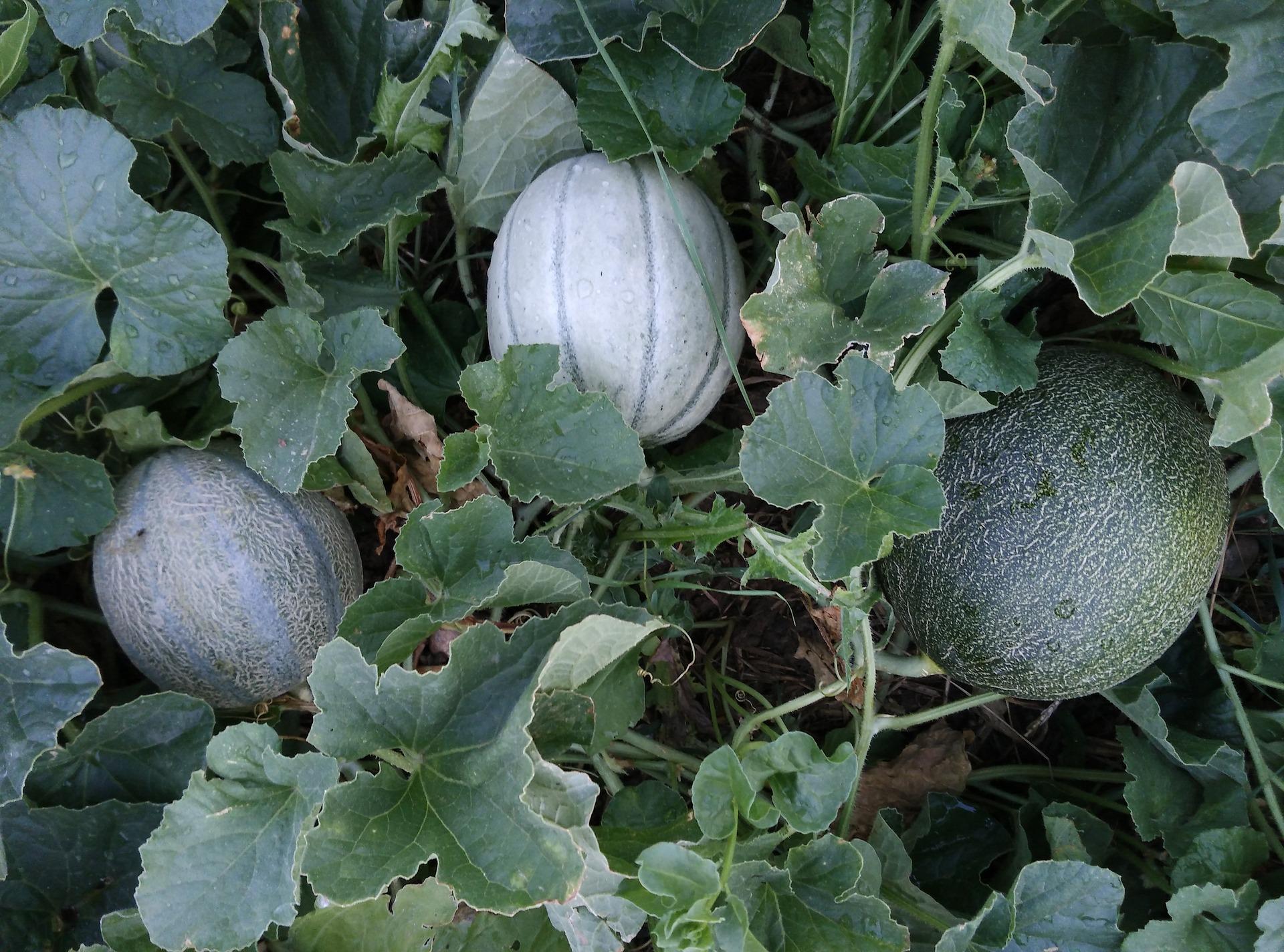

Melon, thought of as an exotic fruit, can be grown in the UK. Rich in vitamins, this watery fruit complements a variety of dishes and desserts.
As a tropical fruit, growing melon in the UK is hard work and it requires access to polytunnels, a greenhouse or outdoor cloches. However, with a little patience and some favourable weather conditions, you can produce a good harvest without depending on supermarket varieties.
Are you looking to grow melons at your allotment? Are you wondering when to plant melon, when to pick melon and how to grow melon? Read our guide till the end for all your answers, or ask our community members by signing up for our newsletter.
Melons are similar to cucumbers and require similar growing conditions. In the UK, you can grow:
However, you should choose to grow those varieties that are suited for the colder climate or are compact. It’s also important to buy seeds only from an authentic garden shop, and to not use seeds obtained from supermarket-bought melons, as they are usually imported and not suitable for the UK’s climate.

Melon seeds can be sown indoors from late March and propagated and placed on a sunny windowsill before being re-potted. Sow two seeds in a 3-inch pot, and you can then grow the strongest of the two. If you don’t have access to a propagator, it’s important to cover them in clear plastic until the seedlings come through. Melon seeds need a temperature of 18°C to germinate, and in a week, you should see your first young seedlings.
In late May or June, once the soil has warmed up and there is no sign of frost, you can plant them in their final position, outdoors under cloches or cold frames or in a greenhouse or polytunnel. The plant must be hardened off before transplanting. Once planted you should pinch the main growing point, which encourages the development of side shoots.
Melons can be grown in growbags and large containers about 40cm deep, ideally in a greenhouse for the humidity, or directly in the soil outside in a sunny and sheltered position. Ensure the temperature in the greenhouse is approximately 12-15 °C.
If you are growing them in a greenhouse, protection from direct, strong sunlight will help reduce mildew on the foliage. Red spiders can also cause problems, but you can reduce this risk by keeping them in high humidity. Mix mulch and compost before planting melon plants, and maintain at least 45-90 cm between two plants.
Melons require a vast amount of space, as they are vigorous climbers. You will need to use a fairly large area if you are growing them in the ground or a strong support structure if you are growing them upwards in containers or growbags. The foliage and stems are large and the fruit becomes heavy, however you can add netted support for the forming fruit, or alternatively, make a hammock-type support! If you are growing melon on the ground, place something underneath the forming fruit to prevent it from rotting, similar to growing pumpkins.
You can grow melon either by letting them trail on the ground or by allowing them to grow vertically if you have limited space in a shared greenhouse. The bamboo support being used should be strong enough to support the weight of the growing fruit.
Start to pinch out, to encourage side shoots and then pinch those out, leaving the stronger side shoots, as this will encourage growth.
Remove any protective covering when they start to flower, as this will aid pollination. Melons have male (thin stalk) and female flowers. When grown outdoors, they are pollinated by bees and insects, but those grown undercover should be hand-pollinated.
Once the fruits begin to form, take off the small, young fruit and leave 3-4 of the strongest fruit on each stem. Melons mature best at around 25°C.
Melons are thirsty plants; however, once the fruits have swelled and the foliage is dying off, you can reduce the watering. Before this, they need watering regularly. However, avoid getting water on the leaf, as it can lead to fungal diseases, and it’s best to water during early mornings or evenings, when cooler. Melon plants also benefit from high potassium feeds given every couple of weeks.
Growing melon in the UK requires time, patience and effort. So, it is only normal to wonder when to pick melon.
Melons are ready for harvest from July onwards, however, you can extend the harvest season until September.
Melons are fully ripened and mature when they have changed colour and will have a sweet smell. They should be cut off and not pulled away from the stem. Colour and skin texture will depend on the variety you are growing, for example, Galia has a netted type skin texture and pattern and will turn more yellow.
Melon can be kept in the fridge for up to a week, and if it is cut open, it should be wrapped and will last for approximately 3-4 days.
Ready to grow melon this season? Allotment Online offers expert guides, crop-specific tips, and a vibrant community of growers to help you succeed. Whether you’re new to growing melon in the UK or returning for a better harvest, we’re here with tips, encouragement, and answers.
Join today to share your stories, get advice from fellow gardeners, and enjoy the satisfaction of harvesting fresh, homegrown produce.
Got a question or success story? We’d love to hear it! Sign up and become part of the community!
Are you looking for tips on growing apples, peaches or redcurrants? Head to our Grow Your Own page, and we’ll answer more specific growing-related questions.